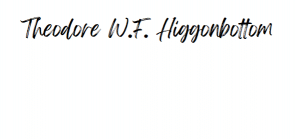What is a Target Audience?
November 14, 2024
Dear Mr. Higgonbottom,
What exactly is a “target audience?” And how can I be sure I’m writing for my target audience?
Dear Reader,
Target audience is a marketing term, defined as the ideal or intended audience for a given product or service. The term encompasses two main areas: demographics, key qualifiers like age, gender, income, marital status, and education; and psychographics, the psychological criteria that influence buying behavior like interests, values, and aspirations.
For example, the target audience for an insurance company might be recent homebuyers who are actively shopping for home insurance. The target audience for a fitness brand might be women 25-40 who have a strong interest in health and wellness and exercise regularly.
In book publishing, target audience is the primary audience for your book: the readers who will have the strongest interest in your book or helped by reading it. In nonfiction, they’re the readers for whom your book will solve a problem (for example, a how-to or self-help title) or, in the case of a memoir, enrich their lives with a memorable, relatable story.
You can think about your target audience as the readers who will be most interested in your book and/or have the most to gain by reading it. Marketing expert Seth Godin referred to this as minimum viable audience—the core group of fans who will buy and read your book.
However, your primary target audience isn’t your only audience. Target audience readers are simply those most closely aligned with the premise of the book and your purpose in writing it. It’s equally important to identify secondary or adjacent audiences who will also find and buy your book.
Publishing experts generally recommend identifying at least three or four markets for a proposed title: a primary market and a minimum of two secondary markets. A book about child psychology, for example, might have a primary target audience of parents, with secondary audiences of educators, therapists, and other professionals who work with children.
With millions of books available to readers and a highly competitive publishing market, clearly defining your target audience is an essential first step before you ever begin writing. Taking time to research, ask questions, gather data, and understand your audience is as important as the writing itself.
Knowing the specific characteristics of your target audience, why they’ll want to read your book, and the benefit they’ll get from it will help you connect with them meaningfully and write the book they want to read. It will help your agent make a compelling case for publication. It will help your publishing team craft an effective marketing campaign. It’s critical for writing, pitching, and promoting your book successfully.
Warmly,
































